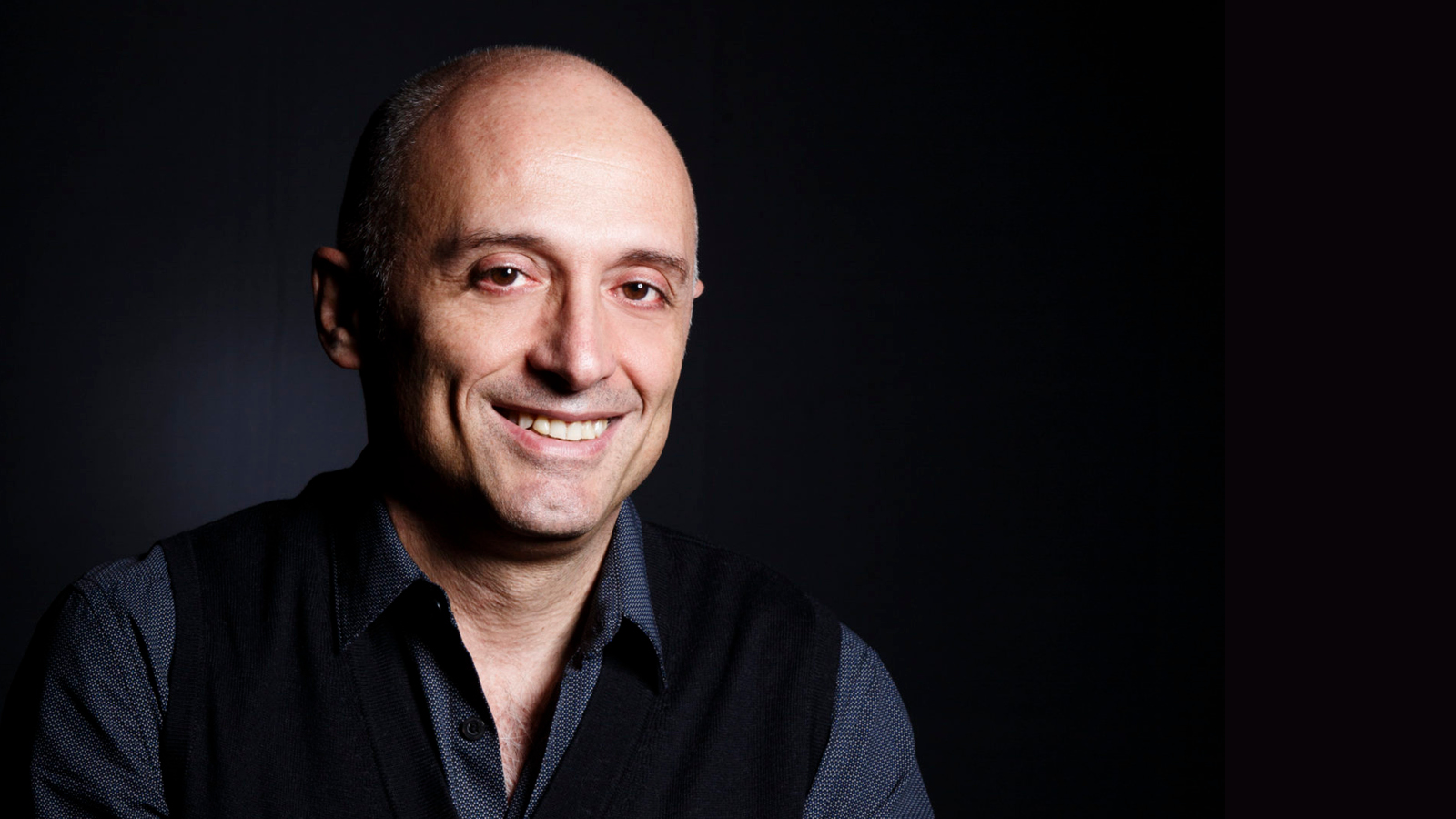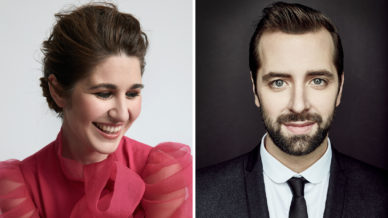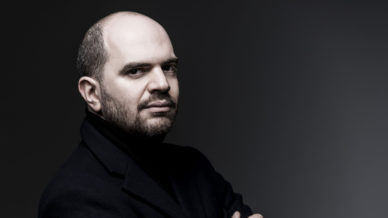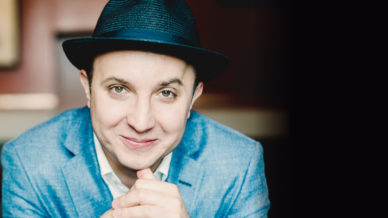

All-Mozart Concert
March 24 – 26, 2022
BERNARD LABADIE conducts
BENEDETTO LUPO piano
MOZART Chaconne from Idomeneo
MOZART Piano Concerto No. 23
MOZART Symphony No. 41, ‚ÄúJupiter‚ÄĚ
Widely regarded as one of the leading interpreters of Mozart, Canadian conductor Bernard Labadie leads an All-Mozart program, starting with the final coronation dance (Chaconne) from the composer’s breakthrough opera Idomeneo.
Italian pianist and winner of the Eighth Van Cliburn International Piano Competition, Benedetto Lupo performs Mozart’s intimate A Major Piano Concerto, engaging the listener with a sunny disposition of poignancy and serenity.
Mozart‚Äôs monumental ‚ÄúJupiter‚ÄĚ symphony ‚Äď aptly named for the king of the gods ‚Äď is his largest and is at once exuberant and introspective, charming and complicated.
For information on our COVID-19 safety protocols, please visit here.

Program Notes
by René Spencer Saller
Even though he died at age 35, Mozart managed to compose 41 symphonies and 27 piano concertos, not to mention music in virtually every other genre that existed during his brief life. Above all, he longed to be a successful opera composer. When the Salzburg native composed his tenth opera Idomeneo, Re di Creta, in late 1780 and early 1781, he was 25 years old and closing in on two decades of professional experience as a musician. But he still hadn’t found his true voice in opera: Idomeneo, his first fully mature effort, was about to change that. To prepare for its premiere, which would take place at the Residenztheater on January 29, he traveled to Munich alone, without a parent to chaperone him, the first such trip he had taken in his life.
His growing independence might account for the boldness in his breakthrough opera. The court musicians of Munich were talented and meticulous, and Mozart took full advantage of their abilities with his virtuosic scoring, particularly for the winds and brass (pairs of flutes, oboes, bassoons, horns, and trumpets). The opening performances of Idomeneo were successful, but Mozart had his heart set on relocating to Vienna, the apex of his operatic ambitions. His greatest glories were still ahead, to be fulfilled in the last decade of his life.
The chaplain, musician, and poet Giovanni Battista Varesco (also known as Giambattista Varesco and Girolamo Giovanni Battista) wrote the libretto for Idomeneo after a similar French play. The plot concerns the titular character, the King of Crete, who makes a rash sacrificial vow to Neptune during a harrowing storm at sea. But this isn’t a tragedy, and‚ÄĒspoiler alert! ‚ÄĒIdomeneo’s beloved son isn’t killed at the end. In typical opera seria fashion, Idomeneo concludes with an elaborately choreographed ballet to celebrate triumph over catastrophe.
The festive closing music includes the sprightly, elegant chaconne performed here. The origins of the chaconne are still somewhat disputed, but it likely engaged from an ancient ceremonial court dance from Mexico, by way of Spain, Italy and finally France. Although the form of a chaconne (and its close cousin the passacaglia) typically calls for a set of variations over a repeated bass figure or harmonic accompanying pattern, this contrast-rich piece assumes more of a fast-slow-fast, rondo-like structure. Mozart adapts his main theme from Christoph Gluck’s Iphig√©nie en Aulide (1774).
Mozart’s Piano Concerto No. 23 reminds us that the best epiphanies happen not when our expectations are met but when they’re met in previously unimagined ways. This concerto delivers beauty in all of its jolting weirdness: the moment we hear the dissonance as sweet and sour and unreasonably delicious; the instant we let strangeness snake its way into the familiar and swallow it whole.
By March of 1786, when Mozart completed his Piano Concerto No. 23, he was the undisputed master of such satisfying surprises. Never merely pretty, the Concerto in A Major gratifies only to gobsmack. The light-spangled simplicity of a few plinked notes sends us hurtling into a kaleidoscopic fugue. An unassuming melody turns richly contrapuntal, only to unravel before our ears. We smile with delight, then gape in mute astonishment.
Since early childhood, when he toured the continent as a keyboard and violin prodigy, and throughout his teens and early adulthood, when he joined his father as a court musician, Mozart had been a dutiful son. But in 1781, at age 25, he defied his father and left Salzburg for Vienna, the nexus of musical culture for German speakers. Although he dreamed of writing operas, he focused at first on his more profitable career as a pianist-composer. This was mostly by necessity; he was chronically broke. But luckily, he was very prolific. Between 1784, the year he began Piano Concerto No. 23, and 1786, the year he finished it, he cranked out a dozen piano concertos, all more or less magnificent.
A Closer Listen
Although it’s certainly tricky and taxing, Piano Concerto No. 23 is more than a virtuoso showpiece. The soloist must be an accompanist, too: a chamber musician, the closest of close listeners. The intimacy is heightened by the substitution of clarinets for oboes and the absence of trumpets and drums in the score.
The opening Allegro, in A Major, begins with a radiant tutti that generates two main thematic ideas: the first cheery, the second a delicate downward sigh. Taking up both themes by turn, the piano reimagines them and reveals new melodic angles. Traces of F-sharp minor emerge, hinting at the upcoming slow movement. Fluttering figuration and Bach-like counterpoint lead to a stunning cadenza, which Mozart, contrary to his usual custom, fully transcribed.
The central Adagio begins with a devastatingly fragile piano melody, which the strings somberly repeat. Unusually for Mozart, it’s in F-sharp minor, the only instance when he used it as the main key of a movement. Flute and bassoon conspire in a bit of brightness, but the piano refuses to be consoled. As the Adagio ends, the piano perseverates on a single note against pizzicato strings: sorrow exalted to silence.
Puncturing the quiet, the Allegro assai erupts in a delirious rondo, returning to the home key and the brilliant back-and-forth of the orchestra and solo piano.
No one knows exactly who came up with the “Jupiter” nickname for Mozart’s final symphony, but it wasn’t the composer himself. At any rate, the Roman god is a decent avatar for Symphony No. 41 (K. 551). Who else could represent Mozart’s magisterial four-movement symphony in C Major but the ruler of thunder, the king of the gods, the divine diplomat?
Miraculously, Mozart managed to complete his last three symphonies in June, July, and August of 1788. The recent publication of Haydn’s “Paris” symphonies‚ÄĒthree of which are in the same keys that Mozart chose for Symphonies 39 through 41‚ÄĒmight have given him the idea. Mostly, though, the cash-strapped composer needed some new material to perform, and he hoped that a fresh batch of symphonies might entice potential clients in London.
Obviously, Mozart had no idea that he’d be dead in three years, or that he’d never write Symphony No. 42. That inconvenient detail doesn’t stop people from interpreting the final symphony as some kind of conscious, career-culminating farewell. But Mozart was far more interested in musical juxtaposition than in self-expression, and Symphony 41 is in many ways an opposing response to its immediate predecessor, in G minor. The English musicologist Julian Rushton called them “twins of opposite character.”
A Closer Listen
As with the Figaro overture, the Allegro vivace immediately announces its intention: to mix things up. Martial pomp collides with lyrical sweetness. Violent storms subside in opera buffa whimsy. Mozart quotes one of his own recent arias, hilariously out of context, and subverts fusty high art‚Äďversus‚Äďlow art conventions by subjecting the little ditty to some serious counterpoint.
In the Andante cantabile, low strings caress a dulcet clarinet motive, while the violins croon a sumptuous countermelody. Richly expressive, with long singing lines, the slow movement has the quality of an aria (the tempo indication means “songlike and flowing”). Next, a hint of the contrapuntal grandeur to come: a graceful minuet weaves together interlocking melodies based on a theme from the first movement.
The finale, marked Molto allegro, starts with a four-note motif that Mozart (and others) had used before, but it’s only a means to an end: even more extreme counterpoint. Here Mozart combines conventional Classical sonata form with fugue, a high Baroque procedure that fascinated him; he pored over (and occasionally filched) similar fugato-style passages in scores by Michael and Joseph Haydn. The monumental coda melds together five distinct motifs, the primary one derived from the earlier four-note plainchant melody.




